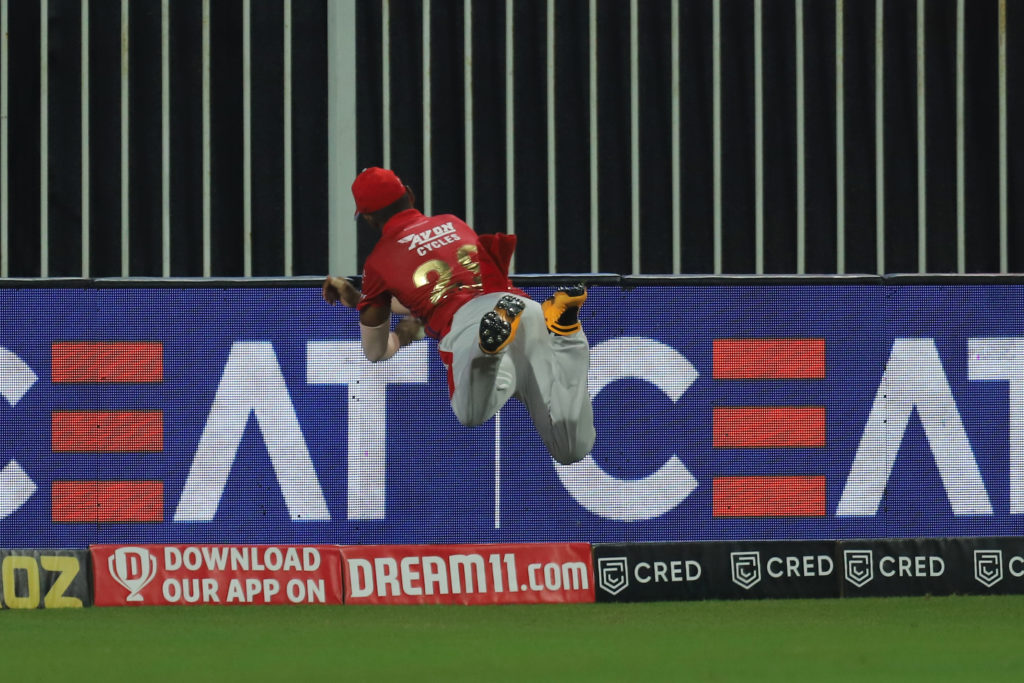T20 cricket has rendered average fielders redundant, writes Ryan Vrede.
I watched Nicolas Pooran’s superhuman fielding effort for the Kings XI Punjab on Sunday in disbelief.
For those who didn’t see the save, which Sachin Tendulkar declared the best he had ever seen in his life, and cricket’s original fielding god Jonty Rhodes lost his mind over, allow me to try and describe it …
The ball was hooked high towards the deep midwicket boundary Pooran was patrolling. Indeed, it cleared the boundary by 1.5m, only for Pooran to track the flight as it sailed over his head, dive backwards while fully extended, take a one-handed catch (with his weaker hand) and, just centimeters from the grass, flick it back in field to save a six.
READ: Rajasthan egde KXIP in thriller
I was certain television replays would reveal that some part of the West Indian’s body was in contact with the ground. There wasn’t. Poetry in motion.
I wished two things at that point: That Glenn Maxwell had been close enough to complete a catch because it would have been the greatest in the game’s history, and, secondly, that there were more articulate commentators on duty, because Kevin Pietersen’s assessment of it as ‘Unbelievable’ (multiple times) simply did not capture the feat’s brilliance.
Pietersen was correct on one important observation though. In the wake of the save, he declared: ‘This is the state of T20 cricket [fielding] at the moment.’ It certainly is.
While Test cricket remains relatively generous to average fielders insomuch as a team can accommodate one, maybe two, without undermining their challenge, there is no room to hide in limited-overs cricket.
T20 is the most unforgiving of these formats, and with teams often being separated by just a handful of runs, fielding ability has become a key selection criteria. An argument can be made that it is the primary selection criteria, followed by a player’s competence in the batting, bowling or allrounder departments.
Indeed, any young player with ambitions of becoming a T20 specialist, as will become an increasingly familiar trend in the very near future, won’t have a professional future, certainly not at the game’s elite levels, unless their fielding is of the highest calibre.
This is because the art and science of fielding has developed fastest in the T20 space, with players coached to excel in specific scenarios, including throwing while off balance or in mid air, hitting the stumps from the boundary, lightning-quick collect and release, weak-hand throwing and ball retrieval from beyond the boundary rope (including players combining to execute a catch on the boundary), among a myriad scenarios.
Pooran’s catch was a moment of cricket magic, but his capacity to perform this magic was honed through hours and hours of complex boundary-catching drills. It would be remiss not to note that Pooran starts from a high base, which features exceptionally high levels of athleticism, anticipation, peripheral vision and spatial awareness – which predisposes him to being an excellent fielder.
‘I find that it’s hard to coach things like anticipation and awareness, because they are generally innate,’ world-renowned specialist fielding coach Chris Taylor told Wisden. ‘But every fielder can become a better fielder. You can’t turn a shocking fielder into Jonty Rhodes, because there is an innate skill level required. There’s no turning Monty [Panesar] into Jonty, but Monty could become a better version of Monty.
‘Good fielders are generally good all-round sportsmen. The skills that you require to be a good rugby player or footballer – peripheral vision, changing direction, hitting the ground – are generally transferrable. Jos Buttler is a good example of someone who’s brilliant at all sports. And attitude is key. Great fielders have great attitudes. They don’t just want the ball to come to them, they want to actively change the game.’
WATCH: Amla rolls back the years
World-class fielding coaches have become sought-after and highly-paid commodities in the T20 format, given an acknowledgement that their efforts have the potential to translate directly into match wins. This is a massive departure from what limited over cricket prioritised even as early as a decade ago.
The game is significantly better for it because, while technical and skill innovations in batting and bowling are critically important, the contest benefits from having as many potentially match-defining dimensions as possible. Fielding in T20 cricket has become just that.
Culturally it is critical as well. Rhodes broke the mould with his fielding style and excellence during a time when this was a deeply neglected discipline in the game. It set in motion a culture of excellence that swept across the cricketing world. Suddenly youngsters were trying to replicate Rhodes, and that fundamentally reformed the game in ways that culminate in breathtaking moments like the one Pooran gifted us on.







